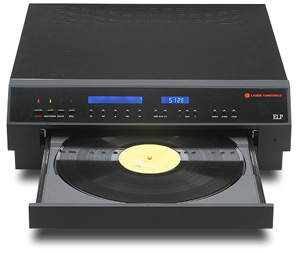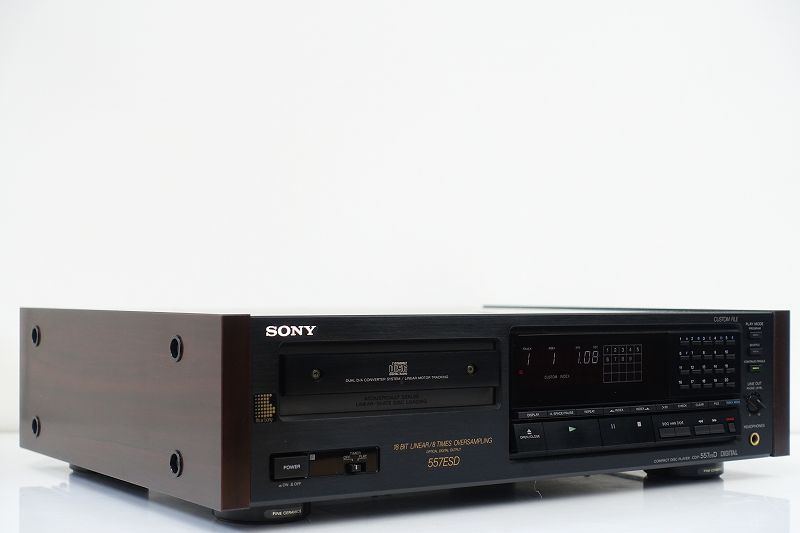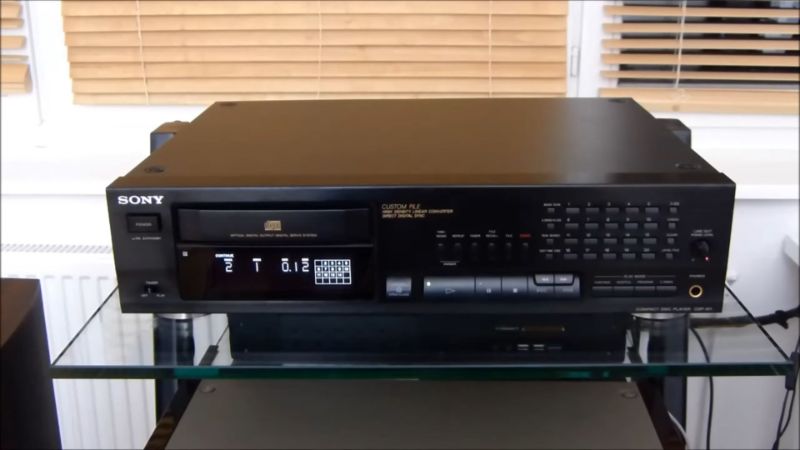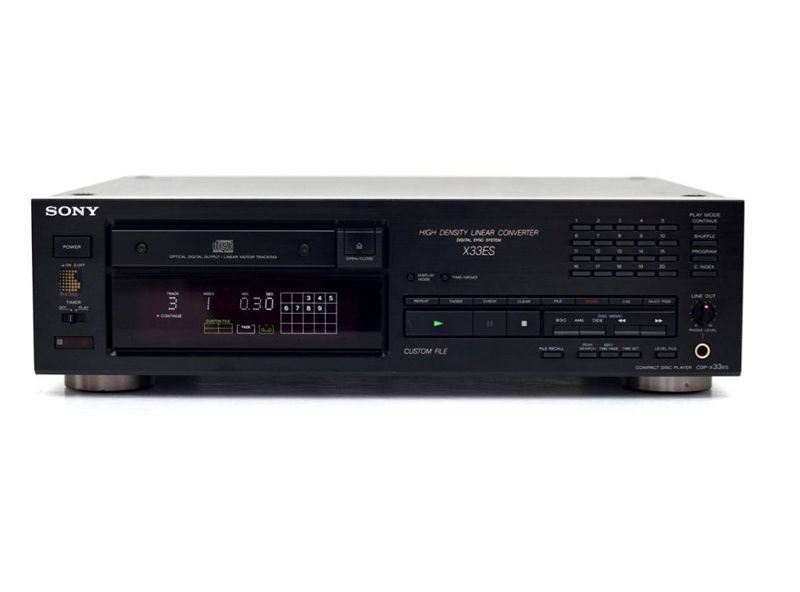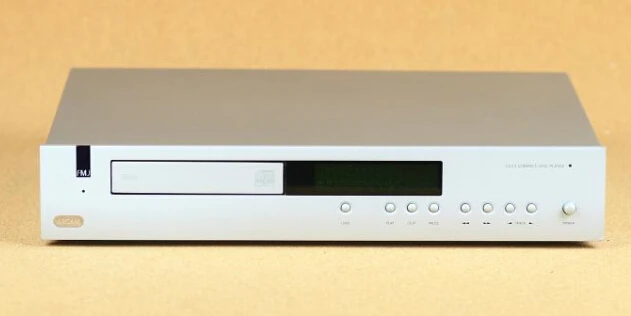The Edison Laser Player laser turntable holds first place in the pantheon of audiophile oddities. Unlike so many weird goods thrown together on someone’s kitchen table, this one took a long time to design and cost a lot of money. Indeed, the fact that the thing ever worked is a tribute to this, as getting an ultra fine and precise laser to follow an undulating LP groove was a difficult engineering problem to begin with. Indeed, the work-up charges are said to have totaled $20 million!
In 1977, at the 57th Audio Engineering Society convention, American engineer William K. Heine presented a paper titled “A Laser Scanning Phonograph Record Player,” explaining a method for making a single 2.2 mW Helium-neon laser follow a record groove and reproduce the stereo audio signal. It was known as the ‘LASERPHONE,’ and it had been in development since 1972, receiving a US patent in 1976. Robert S. Reis, a Stanford graduate student, submitted his master’s thesis on ‘An Optical Turntable’ four years later, and went on to form Finial Technology with engineers Robert E. Stoddard and Robert N. Stark in 1983. The deck made its debut at CES in 1984 as a non-functioning dummy, then returned in 1986 as a working machine with a $2,500 price tag.
The deck, however, was never produced and was instead purchased by CTI Japan, a Japanese affiliate of British turntable manufacturer BSR, in 1989. This firm became ELP, and development continued until the ELP LT-1XA Laser Turntable, with a list price of $20,500, was released in 1991. The National Library of Canada was one of the first customers, and in 2001, the US Library of Congress in Washington received another. The LT-2X was introduced in 2003 with a remote control, and by 2007, 1,300 decks had been sold globally – nearly 2,000 in 2013…
One of the reasons the deck and its intellectual property had been passed from pillar to post is because it had appeared at the worst possible time. A laser tracking turntable seemed entirely at odds with the flow of history in the 1980s, which was a decade preoccupied with Compact Disc and digital audio. When you use the deck, you can definitely sense this — it’s obviously sophisticated, but you’re left wondering why it exists. The deck plays LPs, singles, and 78s, providing many of the benefits of a CD while remaining faithful to the infamously unreliable analogue vinyl medium. It also includes a remote control and full track selection, as well as fast forward and rewind functions.
Even so, it wasn’t something you’d buy instead of a CD player in the 1980s or 1990s — the machine was physically enormous and heavy, not to mention expensive, with costs in the UK ranging from £8,000 to £14,000 in 2004. In other ways, it was difficult to figure out who it was intended for. The fact that there was no physical contact with the record meant that there was no record wear, rumbling, or background noise of any type. All well and good, but is it really worth spending more than £10,000 on?
Another advantage is that there are no cartridge or tonearm-induced resonances or frequency response abnormalities, and the deck performs admirably in this regard, with a very flat frequency response. Of course, there are no tracking errors or inner groove distortion, but that doesn’t mean it won’t play back vinyl with inner groove damage caused by less expensive contact-based turntable systems! The manufacturer also says that there is “no skating or hopping,” which is accurate in a literal sense, yet the ELP does not track perfectly. With certain older albums, the laser-reading height needs to be adjusted as well, so it’s not quite the smooth experience that the firm claims.
In actuality, the deck’s major flaw is that, unlike a traditional turntable, the laser does not clear debris and particles from the record groove while it plays. A normal deck with a stylus in the groove is self-cleaning to a degree, but the ELP is not. That means you have to be meticulous with your LPs; even brand new ones can click and pop due to a few stray dust particles, and anything you’d buy from a secondhand shop will almost certainly require a thorough cleaning with a record cleaning machine.
The ELP sounds excellent — in multiple ways – when properly set up and with immaculate LP recordings. In terms of security and general rock-solid stereo image positioning, it’s probably best compared to high-quality open reel tape. It has an unwavering sense of stability, which is expected of high-end digital players but yet uncommon even among high-end conventional players. The only ‘contact-based’ vinyl players that come close are decks with parallel tracking tonearms, as they appear to be the only ones capable of approaching mastertapes’ vice-like hold on the recorded acoustic.
Another nice feature is the sound’s absolute flatness — there’s no sense of cartridges imposing their own colorations or phase difficulties on the final product. Instead, the music emits a frequency response that is ultra-neutral, open, and even, with no bumps, peaks, or plateaus. Most typical high-end decks seem to make a meal of it when compared to the ELP’s smooth and sharp sound, tremendous quantities of detail, and the ability to cut through complex mixes with relative ease.
However, some listeners may find this deck sterile. This could be owing to the LT2’s lack of traditional LP ‘nasties,’ but it could also be due to the fact that it doesn’t quite get to the melodic heart of the subject. However, as with all high-end turntables, you pay your money and choose what you want. Whatever perspective you take, this is an outstanding product and a true audiophile classic.

